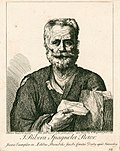Fichier:La Sagrada Familia, por José de Ribera.jpg

Taille de cet aperçu : 445 × 599 pixels. Autres résolutions : 178 × 240 pixels | 356 × 480 pixels | 570 × 768 pixels | 760 × 1 024 pixels | 1 520 × 2 048 pixels | 2 763 × 3 722 pixels.
Fichier d’origine (2 763 × 3 722 pixels, taille du fichier : 1,89 Mio, type MIME : image/jpeg)
Historique du fichier
Cliquer sur une date et heure pour voir le fichier tel qu'il était à ce moment-là.
| Date et heure | Vignette | Dimensions | Utilisateur | Commentaire | |
|---|---|---|---|---|---|
| actuel | 8 décembre 2015 à 20:30 |  | 2 763 × 3 722 (1,89 Mio) | Alonso de Mendoza | User created page with UploadWizard |
Utilisation du fichier
La page suivante utilise ce fichier :
Usage global du fichier
Les autres wikis suivants utilisent ce fichier :
- Utilisation sur ca.wikipedia.org
- Utilisation sur de.wikipedia.org
- Utilisation sur en.wikipedia.org
- Utilisation sur et.wikipedia.org
- Utilisation sur fa.wikipedia.org
- Utilisation sur fi.wikipedia.org
- Utilisation sur it.wikipedia.org
- Utilisation sur ja.wikipedia.org
- Utilisation sur lt.wikipedia.org
- Utilisation sur sk.wikipedia.org
- Utilisation sur tr.wikipedia.org
- Utilisation sur vi.wikipedia.org
- Utilisation sur www.wikidata.org
- Q19911538
- Wikidata:WikiProject sum of all paintings/Collection/Metropolitan Museum of Art/17th Century
- User:Pharos/sandbox
- Wikidata:WikiProject sum of all paintings/Creator/Jusepe de Ribera
- Wikidata:Met Open Access Artworks Challenge/FA
- Wikidata:GLAM/Metropolitan Museum of Art/Highlights inventory
- Wikidata:GLAM/Metropolitan Museum of Art/TOAH inventory
- Wikidata:GLAM/Metropolitan Museum of Art/Reports
- Wikidata:WikiProject sum of all paintings/Catalog/The Metropolitan Museum of Art Guide
- Wikidata:WikiProject sum of all paintings/Catalog/Earl of Northbrook collection, 1889
- Utilisation sur zh.wikipedia.org


